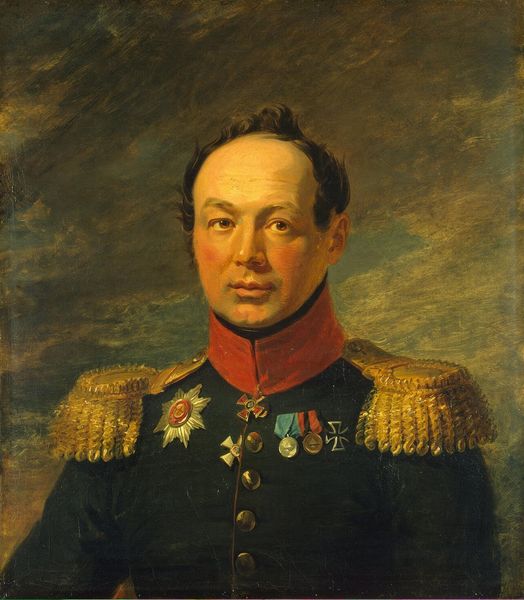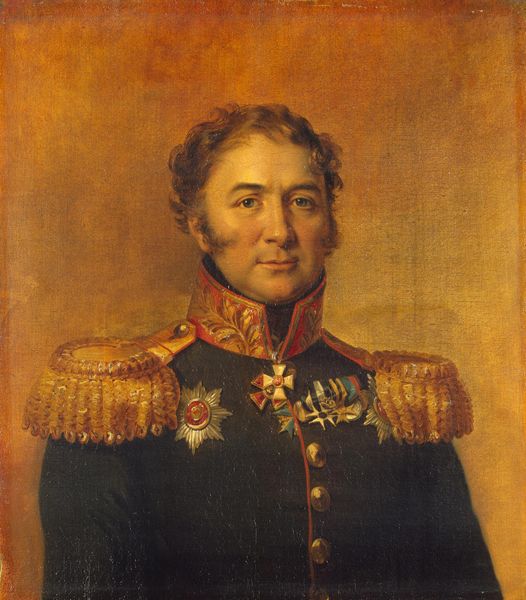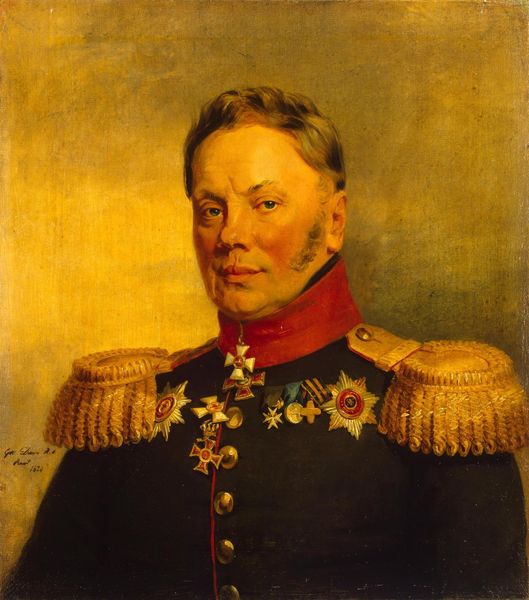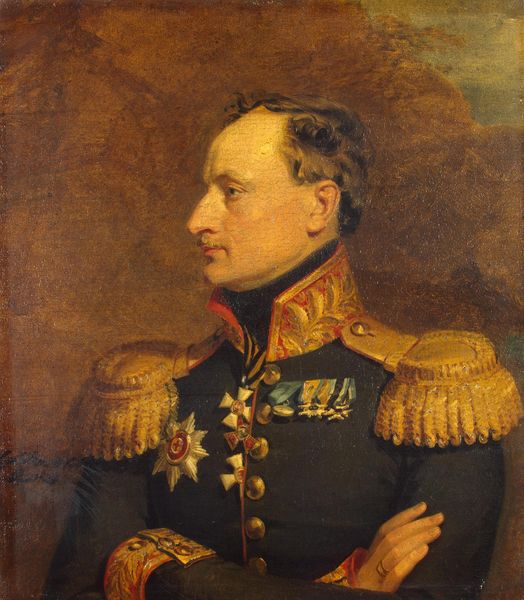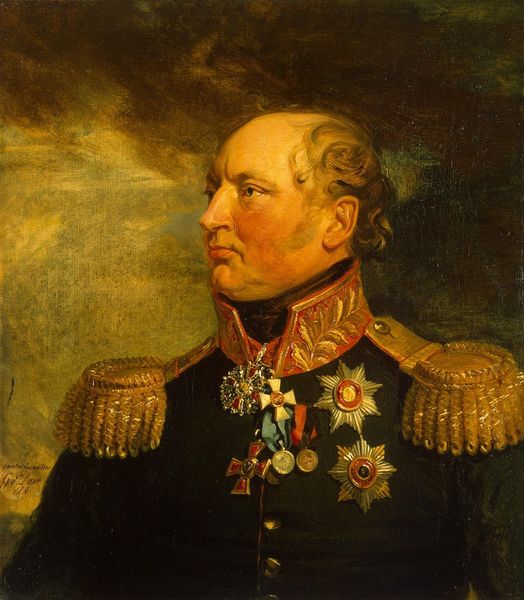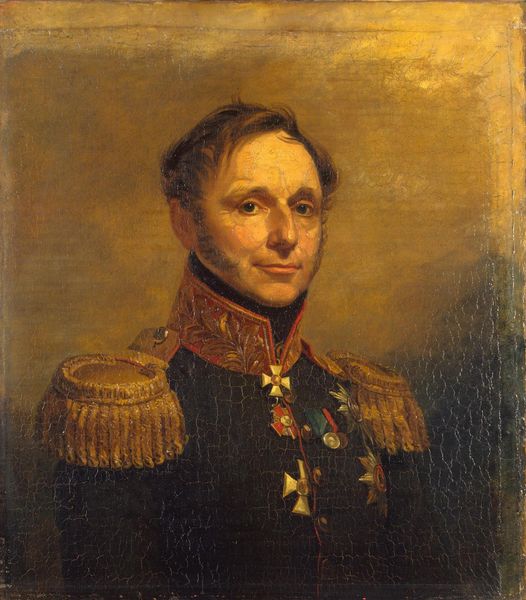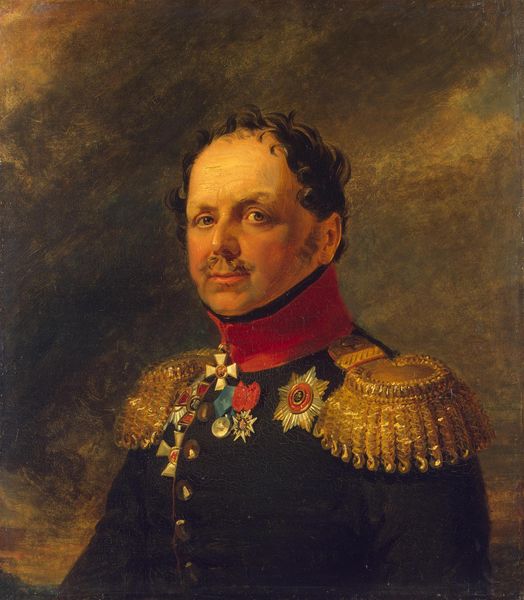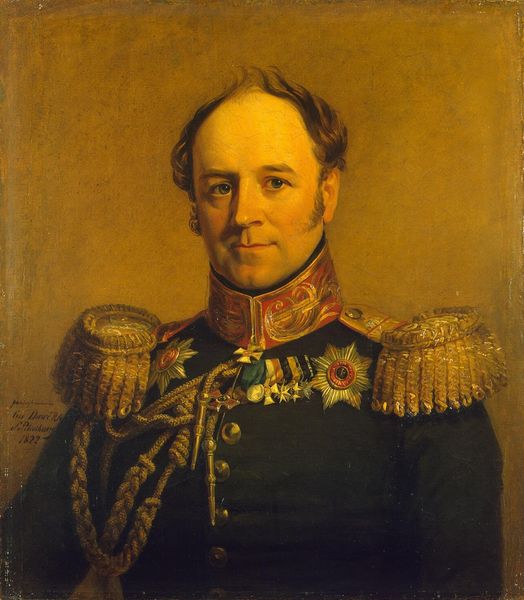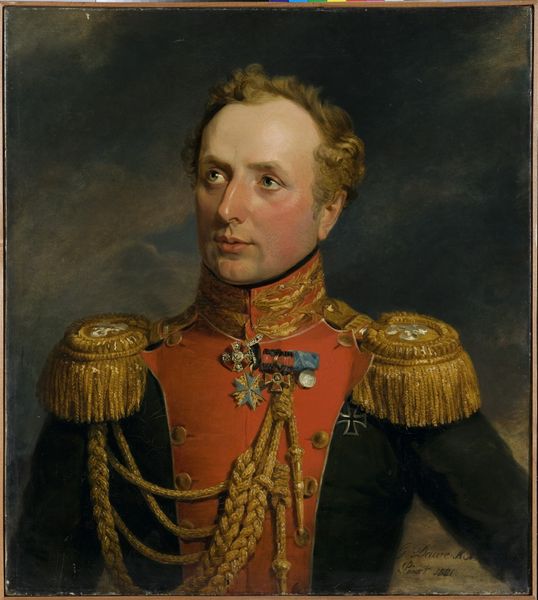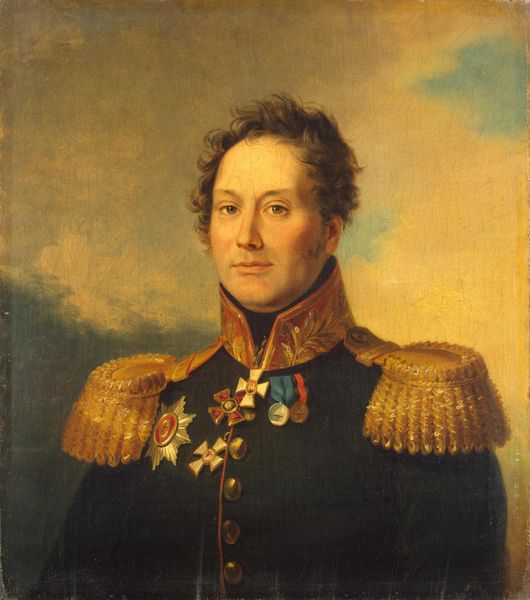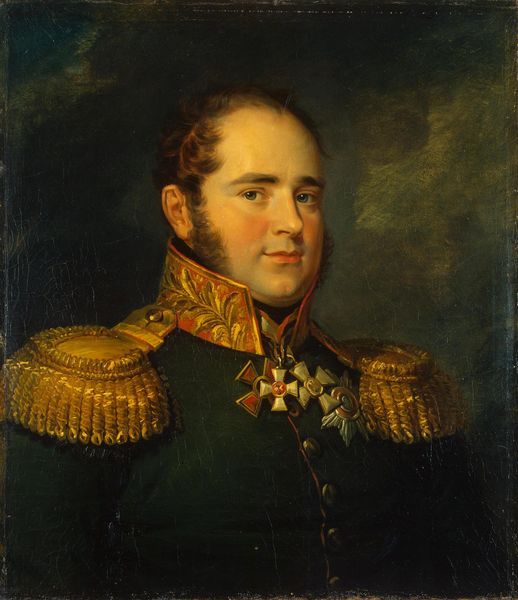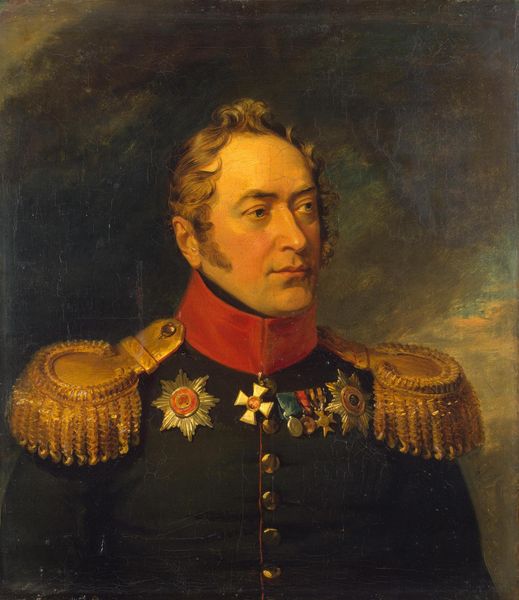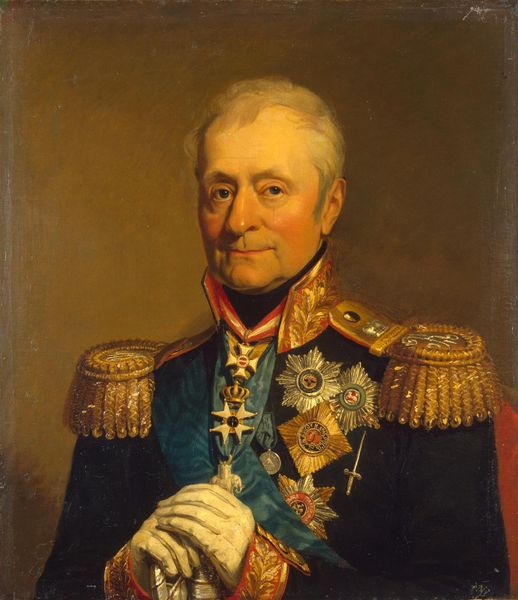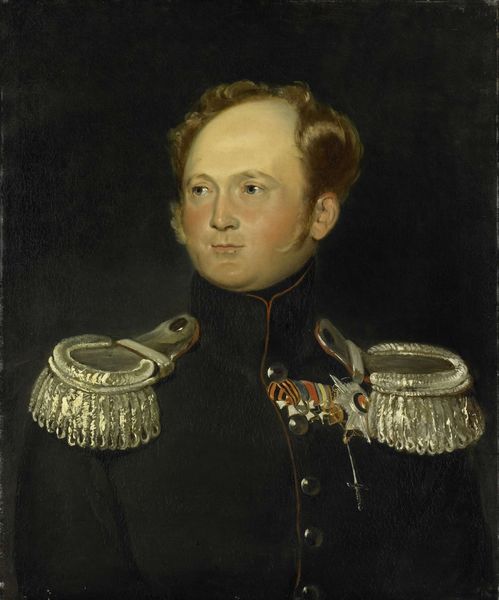
Copyright: Public domain
Curator: This is George Dawe's portrait of "Theodor Ertel, Russian General," painted in 1825. It hangs here at the Hermitage. Editor: The details of the uniform practically leap out! The way the light catches those gilded epaulettes, the orderly rows of medals... impressive. But the general himself seems a bit…soft, almost out of place amidst all that metallic sheen. Curator: Dawe was incredibly prolific; he painted over 300 portraits of Russian generals for the Winter Palace. Considering the sheer volume of his output, it raises questions about the assembly-line processes in his studio and the contributions of his assistants. Editor: That may be, but let’s not dismiss Dawe’s skill in rendering textures. Look at the contrast between the rough impasto of the gold braid and the smoother handling of the face, drawing our attention to the play of light and shadow there. Notice the somewhat vacant expression in the subject's eyes, though. Do you think it hints at some inner life, some deeper story? Curator: Perhaps, or it's just a result of the general holding still for hours. The social context is key here. These portraits served as propaganda, glorifying military heroes after the Napoleonic Wars. The emphasis on rank and achievement within the rigid structure of Tsarist society speaks volumes. Think of the labour of artisans crafting those medals! The artist, by rendering this material reality, becomes implicated. Editor: I see your point. The medals do signal status, but aesthetically they create a stunning visual rhythm—small bursts of light against the dark uniform. The stark red collar emphasizes Ertel's rigid posture. There’s tension in this arrangement. It’s carefully calibrated to create a sense of power. Curator: Exactly! It’s about crafting an image of power to reinforce an existing social order. And what kind of artistic labor went into creating and sustaining that image of power and order? The question that this artwork asks, at least to me, is where to allocate agency in the creative processes. Editor: The dialogue between form and context certainly adds layers to the viewing experience, wouldn't you agree? Curator: I couldn't agree more; reflecting on artwork material conditions of productions help see its form more clear.
Comments
No comments
Be the first to comment and join the conversation on the ultimate creative platform.
